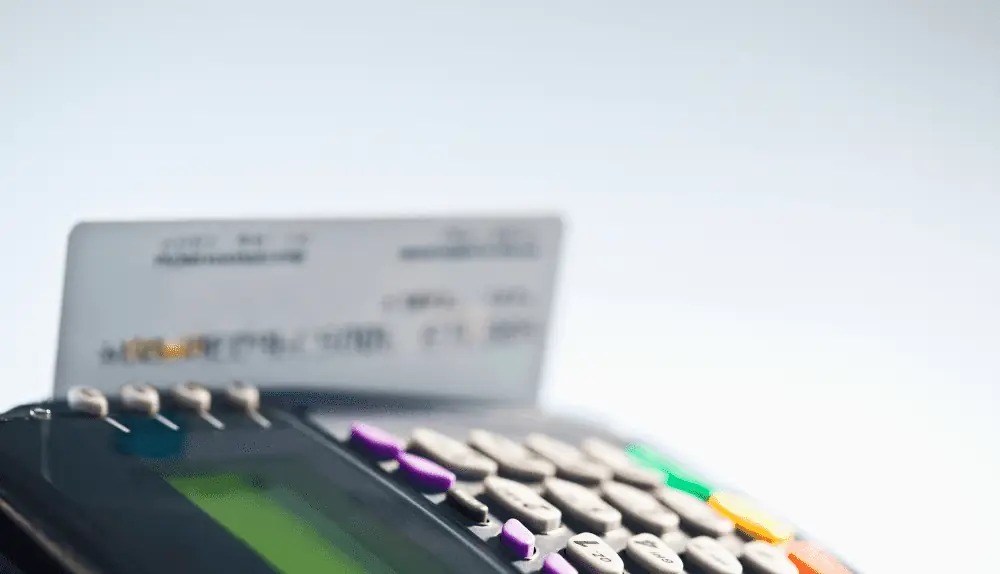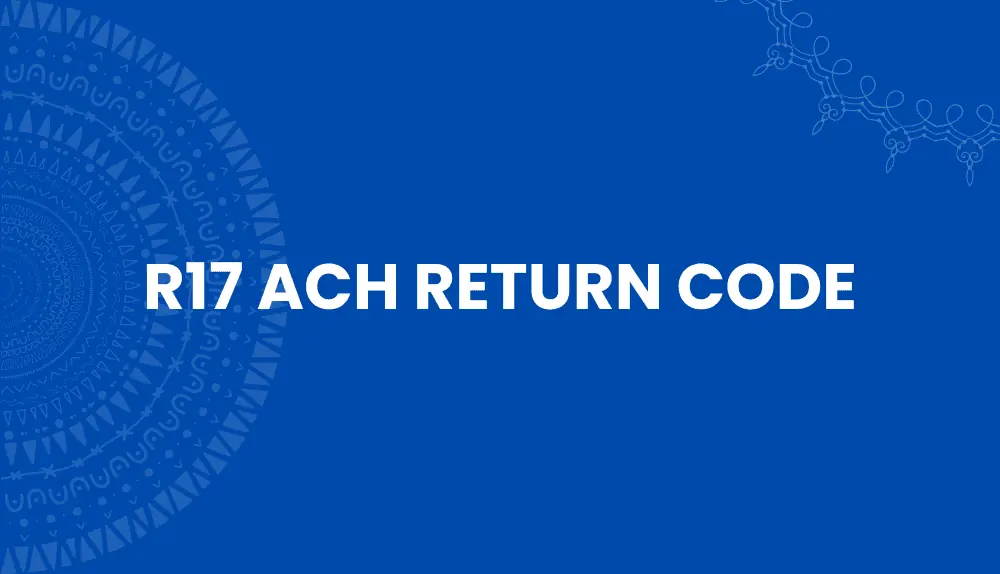In the fast-paced world of electronic transactions, where money moves at the speed of light, precision, and accuracy are paramount. Behind this seamless dance of funds lies a sophisticated system of checks and balances, ensuring that each payment reaches its intended destination flawlessly.
One crucial player in this financial symphony is the enigmatic “R17 ACH Return Code File Record Edit Criteria.” Concealed within its cryptic title lies a set of rules and guidelines, akin to the secret keys of a treasure chest, guarding against errors and missteps in the world of Automated Clearing House (ACH) transactions. Join us as we unlock the mysteries of this elusive entity, delving into its intricate mechanisms and discovering how it wields its power to safeguard the integrity of electronic payments.
In this exploration, we will unveil the art and science behind the ACH return process, shedding light on the inner workings of the financial realm, where precision reigns supreme, and errors are never tolerated. Embark with us on this enlightening journey, where knowledge becomes your most potent weapon in the quest for seamless financial transactions.
What Does R17 ACH Return Code Mean?

The ACH R17 return code signifies a specific scenario within the Automated Clearing House (ACH) network where a payment transaction is rejected and returned by the receiving bank. This return code is used when the ACH entry contains invalid or incorrect information, rendering the transaction unable to be processed successfully.
Typically, the R17 return code arises when there are issues with the bank account number provided in the ACH entry. It may indicate that the account number is either missing, invalid or does not match the name of the account holder. Additionally, it can be triggered if the account number structure is not recognized or if it fails to pass the necessary validation checks.
When an ACH transaction receives the R17 return code, it means that the receiving bank has meticulously examined the information provided within the ACH entry and has identified an essential discrepancy that prevents them from processing the payment further. Consequently, the original sender of the ACH transaction will be notified of the return and the failure to complete the transaction as intended.
To rectify the situation, the sender must review and correct the erroneous account information before attempting to resend the ACH payment. This meticulous process ensures the accuracy and security of ACH transactions, maintaining the integrity of the financial system and protecting both businesses and individuals from potential errors or fraudulent activities.
Reasons ACH R17 Return Code Can Occur

The ACH R17 return code can occur for various reasons, all of which are related to issues with the bank account information provided in the Automated Clearing House (ACH) entry. Let’s explore some common scenarios that may trigger the ACH R17 return code:
Invalid Account Number
One of the most prevalent reasons for the ACH R17 return code is an invalid or incorrect bank account number. This could be due to a typographical error, missing digits, or an account number that does not exist within the bank’s records. In such cases, the receiving bank cannot process the transaction, and the payment is returned to the sender.
Mismatched Account Name and Number
ACH transactions require accurate matching of the account holder’s name and the associated account number. If there is a discrepancy between the name provided in the ACH entry and the actual account holder’s name, the receiving bank may reject the transaction with the R17 return code.
Unrecognized Account Number Structure
Financial institutions follow specific formats for their account numbers to ensure consistency and accuracy. If the account number provided in the ACH entry does not adhere to the required structure, the receiving bank may be unable to process the payment, leading to an ACH R17 return.
Failed Validation Checks
Before processing an ACH transaction, banks conduct various validation checks to verify the account details. If the account fails any of these checks, such as a routing number verification or an account status check, the ACH entry may be rejected with the R17 return code.
Closed or Inactive Accounts
Attempting to make payments to closed or inactive bank accounts will result in an ACH R17 return. The receiving bank identifies that the account is no longer active and rejects the transaction accordingly.
Unauthorized Transactions
To protect customers from unauthorized debits, banks may scrutinize ACH transactions for any signs of fraudulent or unauthorized activities. If a transaction is flagged as suspicious or unauthorized, it may be returned with the R17 code.
Overall, the ACH R17 return code serves as an important safeguard in the ACH network, ensuring that only accurate and valid payment information is processed. By understanding the reasons behind the occurrence of the ACH R17 return code, businesses, and individuals can take necessary precautions to prevent payment rejections and ensure smooth ACH transactions. Double-checking account information and adhering to ACH guidelines are essential practices to avoid encountering the ACH R17 return code and its associated challenges.
Steps to Fix ACH R17 Return Code

Fixing an ACH R17 return code requires careful examination and resolution of the underlying issues with the bank account information provided in the Automated Clearing House (ACH) entry. Here are the steps to effectively address and rectify the ACH R17 return code:
Review the Return Information
Upon receiving the ACH R17 return code notification, carefully review the return information provided by the receiving bank. This information will typically include details about the reason for the return, such as an invalid account number or a mismatch between the account holder’s name and the account number. Understanding the specific issue is crucial in determining the appropriate course of action.
Verify Account Information
Double-check all the account information provided in the ACH entry, including the account number and the account holder’s name. Ensure there are no typographical errors, missing digits, or other inaccuracies that could lead to the ACH return. If possible, cross-reference the account details with the account holder or their authorized representative to confirm their accuracy.
Contact the Receiver
If the reason for the ACH R17 return is not immediately apparent, consider reaching out to the receiving bank or the account holder to inquire about the issue. Open communication can help clarify any discrepancies and may provide insights into the specific problem that caused the ACH return.
Rectify the Account Information
Once you have identified the issue with the account information, take the necessary steps to rectify it. This may involve updating the account number, correcting the account holder’s name, or ensuring that the account details adhere to the required format as specified by the receiving bank.
Update Payment Records
After making the necessary corrections, update your payment records with the corrected account information. Ensure that future transactions use accurate account details to avoid encountering the ACH R17 return code again.
Resubmit the ACH Transaction
With the account information corrected, you can now resubmit the ACH transaction. Before doing so, it is crucial to verify that all other details in the ACH entry, such as the routing number and transaction amount, are also accurate. This step ensures that the resubmitted transaction is error-free and has a higher likelihood of successful processing.
Monitor for Successful Completion
After resubmitting the ACH transaction, closely monitor its progress to ensure it is successfully processed by the receiving bank without encountering any further issues. If the transaction goes through without a hitch, the ACH R17 return code has been effectively resolved.
Implement Preventive Measures
To prevent future occurrences of the ACH R17 return code, consider implementing preventive measures, such as conducting regular audits of payment information, maintaining up-to-date account records, and adhering to ACH guidelines and best practices.
By following these steps, businesses and individuals can efficiently address and resolve the ACH R17 return code, ensuring smooth and error-free ACH transactions while safeguarding the integrity of the financial system.
How Can Businesses Deal with ACH R17 Return Code
Dealing with the ACH R17 return code is an essential aspect of managing ACH transactions for businesses. While encountering an ACH R17 return can be frustrating, businesses can take proactive steps to handle these situations effectively. Here are some strategies to deal with the ACH R17 return code:
Review and Understand the Return Information
When a business receives an ACH R17 return code notification, it’s crucial to carefully review and understand the return information provided by the receiving bank. This information will outline the specific reason for the return, such as an invalid account number or a mismatch between the account name and number. Understanding the root cause of the return is the first step in addressing the issue.
Verify and Update Account Information
After identifying the reason for the ACH R17 return, businesses should verify the accuracy of the account information. This may involve cross-referencing the account number and account holder’s name with the records maintained by the business. If any inaccuracies are found, the account information should be promptly updated to ensure future transactions are correct.
Communicate with the Customer or Vendor
If the ACH R17 return is due to a discrepancy in the account information provided by the customer or vendor, businesses should communicate with them to resolve the issue. Open communication can help clarify any misunderstandings and facilitate the correction of the account details.
Rectify the Issue and Resubmit the Transaction
Once the account information is verified and corrected, the business can proceed to rectify the issue that caused the ACH R17 return. This may involve updating the account number, ensuring proper formatting, or resolving any other validation errors. After making the necessary adjustments, the business can resubmit the ACH transaction.
Monitor Transaction Status
After resubmitting the ACH transaction, businesses should closely monitor its status to ensure it is successfully processed without encountering another ACH R17 return. Monitoring the transaction’s progress provides early detection of any potential issues, allowing for prompt resolution if needed.
Review Internal Processes and Training
To prevent future ACH R17 return occurrences, businesses should review their internal processes and training. This includes ensuring that employees responsible for processing ACH transactions are well-trained and adhere to ACH guidelines and best practices. Implementing regular audits of payment information and maintaining up-to-date records can also help minimize the chances of encountering the ACH R17 return code.
Consider Using ACH Validation Tools
Using ACH validation tools and software can help businesses minimize the risk of ACH R17 returns by automatically verifying account information before processing transactions. These tools can flag potential issues and provide real-time feedback, enabling businesses to correct errors before submitting ACH transactions.
By following these steps and implementing preventive measures, businesses can effectively deal with the ACH R17 return code, ensuring smoother ACH transaction processes and maintaining strong relationships with customers and vendors.
Final Words
In conclusion, the ACH R17 return code plays a critical role in safeguarding the integrity of Automated Clearing House (ACH) transactions by identifying and addressing issues related to account information.
While encountering the ACH R17 return code may present challenges for businesses, it also serves as an opportunity to improve payment processing practices. By promptly reviewing and understanding the return information, verifying and updating account details, and maintaining open communication with customers and vendors, businesses can effectively resolve ACH R17 return occurrences.
Additionally, implementing preventive measures such as using ACH validation tools, conducting regular audits, and adhering to ACH guidelines can significantly reduce the risk of encountering the ACH R17 return code in the future. With a proactive and meticulous approach, businesses can navigate the complexities of the ACH network with confidence, ensuring seamless and error-free ACH transactions, bolstering trust with partners, and ultimately contributing to a more efficient and secure financial ecosystem.
Frequently Asked Questions (FAQs)
Why did I receive an ACH R17 return on my transaction?
You received an ACH R17 return because there was an issue with the account information provided in the ACH entry. This could be due to an incorrect or invalid account number, a mismatch between the account name and number, an unrecognized account number structure, or other validation errors.
How can I fix an ACH R17 return and resubmit the transaction?
To fix an ACH R17 return, review the return information, verify and update the account information, and rectify any issues that caused the return. Once the necessary corrections are made, you can resubmit the ACH transaction with the updated and accurate account details.
Can I prevent ACH R17 returns from happening in the future?
Yes, you can take preventive measures to reduce the risk of ACH R17 returns. This includes using ACH validation tools to verify account information before processing transactions, conducting regular audits of payment information, and ensuring that employees are well-trained in ACH guidelines and best practices.
What should I do if I encounter frequent ACH R17 returns?
If you encounter frequent ACH R17 returns, it may be an indication of underlying issues with your payment processing practices or account information management. Conduct a thorough review of your internal processes, communication with customers or vendors, and account data accuracy to identify and address the root causes of the returns.
Can I dispute an ACH R17 return?
While you cannot dispute an ACH R17 return itself, you can investigate and resolve the underlying issues to prevent future returns. If you believe the return was made in error, you may contact the receiving bank or financial institution to inquire about the specific reason for the return and work towards a resolution.

